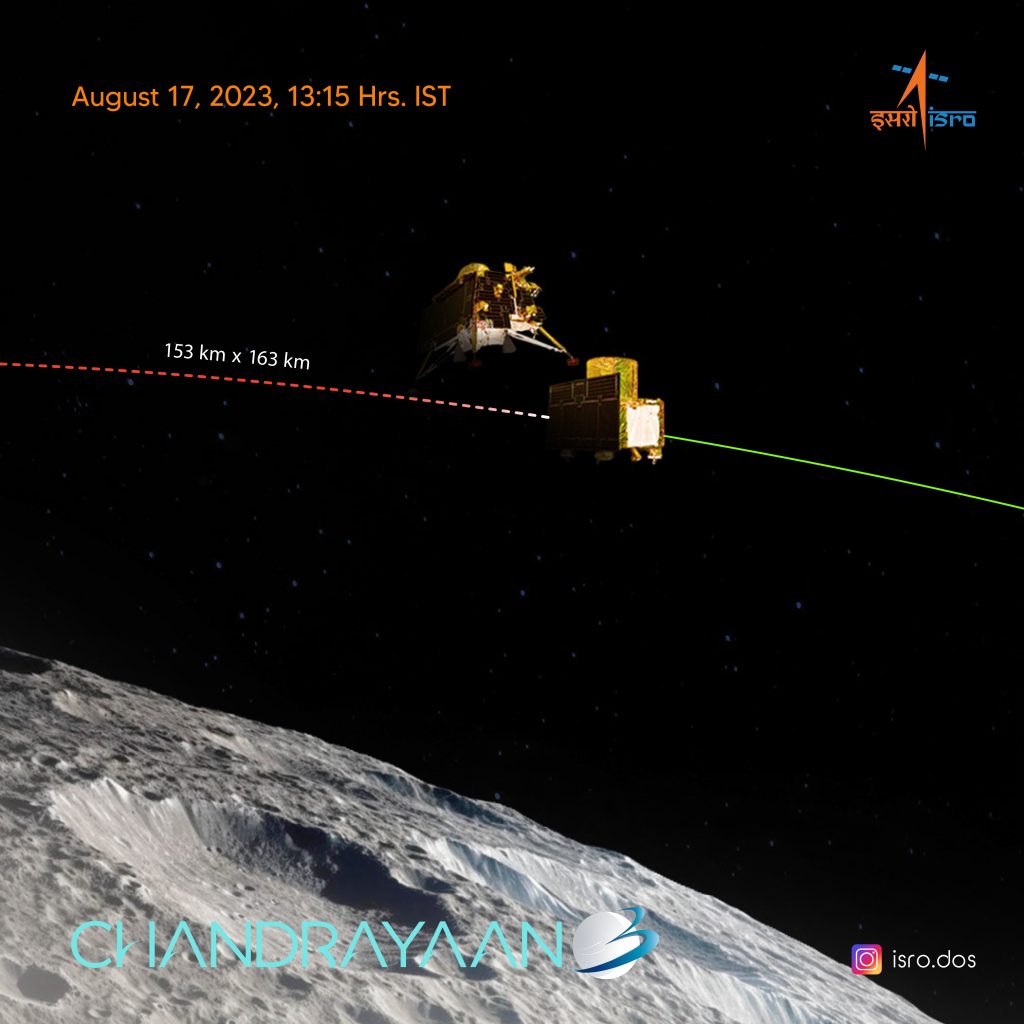
chandrayaan-3-latest-updates-vikram-lander-successfully-separates-from-spacecraft
The Chandrayaan-3 landing module comprising Vikram (the lander) and Pragyan (the rover) has successfully separated from the propulsion module of the spacecraft, marking a major milestone in ISRO’s moon mission.
“Thanks for the ride, mate!”, Indian Space Research Organisation (ISRO) posted on X as Chandrayaan-3’s lander separated from its propulsion module earlier today.
The Indian Space Research Organisation (ISRO) is embarking to achieve a successful soft landing on the Moon with the launch of Chandrayaan-3. The spacecraft is now primed for its scheduled moon landing on August 23. This endeavor places India on track to become the fourth nation globally to achieve this remarkable milestone, joining the company of the United States, Russia, and China.
Chandrayaan-3 Mission:
Meanwhile, the Propulsion Module continues its journey in the current orbit for months/years.
The SHAPE payload onboard it would
☑️ perform spectroscopic study of the Earth’s atmosphere and
☑️ measure the variations in polarization from the clouds on…— ISRO (@isro) August 17, 2023
Chandrayaan-3’s Vikram lander is set to undergo a crucial deboosting maneuver on August 18 after being separated from the Propulsion Module earlier today.
The Indian Space Research Organisation (ISRO) announced that the landing module, comprising the Vikram lander and Pragyan rover, has successfully separated from the propulsion module, marking a significant milestone in the mission.
The term ‘deboosting’ refers to the process of slowing down a spacecraft by reducing thrust, typically to achieve a stable orbit.
The mission was launched effectively on July 14 via the GSLV Mark 3 (LVM 3) heavy-lift launch vehicle from the Satish Dhawan Space Centre in Andhra Pradesh’s Sriharikota. It is poised to touch down on the moon’s exterior come August 23. It represents India’s third lunar expedition and its second endeavor to achieve a delicate landing on the Moon’s terrain.
Moon’s south pole region: Possibility of presence of water
Polar regions of the moon are a very different terrain due to the environment and the difficulties they present and therefore have remained unexplored. All the previous spacecraft to have reached the moon landed in the equatorial region, a few degrees latitude north or south of the lunar equator. The moon’s south pole region is also being explored because there could be a possibility of presence of water in permanently shadowed areas around it.
Chandrayaan-3 is India’s second attempt at carrying out a “soft landing” on the lunar surface, after Chandrayaan-2 crashed during the final landing manoeuvre.



